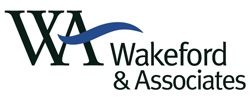In sales training, it is often said that “people don’t buy the drill, they buy the holes”. This expression is used to highlight the difference between a feature and a benefit of a product or service.
Features describe the characteristics of a product or service (the drill); benefits describe the advantages offered to the customer (the hole). When a customer asks “What’s in it for me?” she is asking about the benefits.
Features on a Résumé
When you are developing your résumé, you will need to include your features. In résumé terminology, features are known as keywords. For example, you might find the following list of keywords on a job description or résumé: QuickBooks, Professional Engineer (P.Eng.), BA, Director, fundraiser, Microsoft, driver’s license, President and budgets.
You will notice that keywords describe the knowledge, skills, experience and education needed for a particular position, including industry specific terms, technical skills, qualifications, educational requirements and job titles.
Keywords on your résumé tell the employer that you have the key requirements for the position. They also create a link between your résumé and the words on the job description.
Benefits on a Résumé
Your résumé will also need to describe the benefits you have to offer. This can be done through the use of action words. The following are action words you might find at the start of bullet points on a résumé: Analyzed, Created, Coordinated, Managed, Organized, Led and Trained.
Action words are important because they help explain how your past employers benefited from your work. They help to draw a link between what you have done in the past and what you will be able to do for your new employer.
Benefits have the power to move a customer to action so that they book an appointment or buy a product. On a résumé, it’s your benefits that will move an employer to invite you in for an interview.
To learn more, see the post: “Bullet Points: Action Words and Transferable Skills”.
Identifying Benefits
Before you can sell a product you must know how your customer will benefit. For example, if you are selling a car that gets 60 mpg, you want to ask: “What’s in it for the customer?” The answer may lead to an advertising campaign that focuses on how good customers will feel knowing they’ve done something good for the environment.
Take a few minutes now to review your résumé. Highlight all of the keywords; then, using another colour highlighter, identify all of the action words.
For example in the bullet points below, yellow is used to highlight the action words/benefits (verbs) and blue highlights the keyword/features (nouns).
- Created Excel spreadsheets that improved product tracking and reduced lost items by 10%
- Interpreted engineering drawings and blueprints
- Designed and fabricated tools, dies, jigs and fixtures
Look at the keywords you’ve highlighted and ask “What is the benefit to the employer?”
For example, if you’ve included the feature “WHMIS Certification” on your résumé you will need to think about how an employer will benefit. Your answer may lead you to create the following bullet point:
- Coordinated WHMIS and First Aid/CPR Certification training for 40 team members and monitored and tracked all First Aid supplies
Ideally, your finished résumé will include a good balance of keywords and action words.
